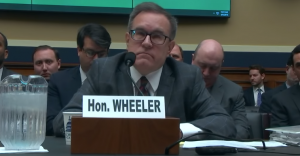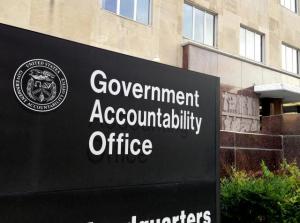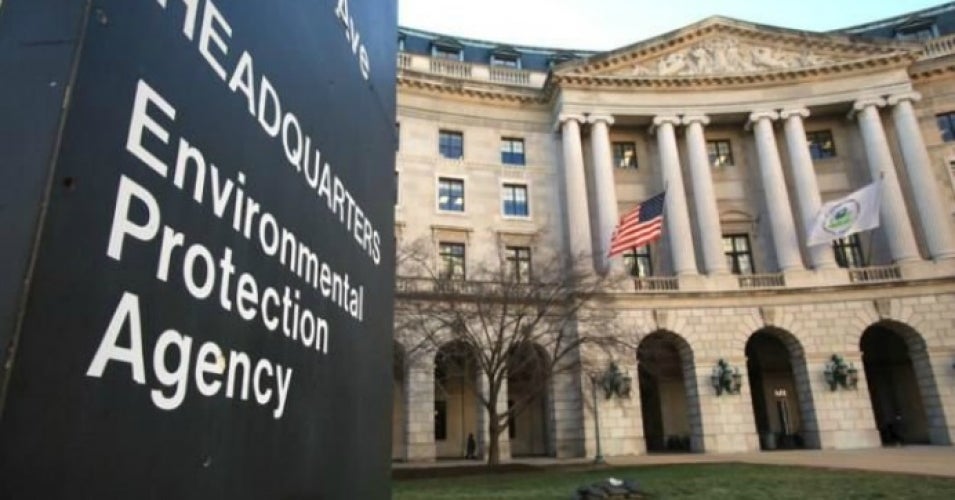
Wheeler piles on more deception trying to defend EPA’s corrupt actions on formaldehyde
Richard Denison, Ph.D., is a Lead Senior Scientist.
In a series of recent hearings Environmental Protection Agency (EPA) Administrator Andrew Wheeler has sought to justify his and his agency’s corrupt decisions to kill off a health assessment of formaldehyde done by career scientists in the agency’s science arm (IRIS) and resurrect it under the control of conflicted political appointees.[pullquote]Once again, the Trump EPA is elevating private interests over the public interest – and offering up deceptions to try to obfuscate and cover up its real intent.[/pullquote]
Recall that under Wheeler’s and his predecessor’s leadership, a draft of the IRIS assessment, ready since fall 2017 for release for public comment and peer review, has been suppressed. Also recall that EPA leadership ran a phony priority-setting process last fall under the direction of yet another conflicted political appointee in order to claim that the IRIS formaldehyde assessment is no longer a priority for the agency. Aspects of this scheme were highlighted in a recent report of Congress’ Government Accountability Office (GAO). Finally, recall that a scant few weeks after that pronouncement, EPA declared last month that it intends to name formaldehyde a “high-priority substance” under TSCA.
Now to the next installment in this corrupt scheme: Here is an excerpt from Wheeler’s testimony from yesterday seeking to justify these earlier moves (minute 35:54 here):
If we were going to move forward with the formaldehyde IRIS assessment, it would be a minimum of 18 months and we decided that it was more important to go ahead and put formaldehyde through the TSCA program because at the end of the day we can regulate formaldehyde under TSCA. You cannot regulate a chemical under IRIS.
Let the obfuscation and deception begin.
First, Wheeler has provided no basis for his 18-month claim. But it is sheer hypocrisy for him to now cite as an excuse how long completion of the IRIS assessment would take – after helping to suppress the draft of that assessment for the past 18 months. But for EPA leadership’s interference, the IRIS assessment would likely have been completed by now and available for use in the TSCA office.
Second, it is of course true that the TSCA office is a regulatory office and that in principle it could regulate formaldehyde under TSCA. Given this EPA’s track record of not regulating chemicals, I would take with a freight train’s load of salt Wheeler’s assertion that he’s doing all this so they can regulate formaldehyde in the end; it’s precisely the opposite. But what his claim entirely omits is that the entire purpose of establishing IRIS back in 1985 was for it to conduct credible health hazard assessments of chemicals outside the fray of regulatory decisions – which could then be used by the regulatory offices at EPA to inform regulations. Wheeler also conveniently omits that a TSCA assessment of formaldehyde will only be of use to the TSCA office, while a completed IRIS assessment would be of use to the whole array of EPA regulatory offices.
But let’s, just for the sake of argument, take Wheeler’s 18-month claim at face value. That would put completion of the IRIS assessment in October 2020. Does that justify starting the assessment all over again under TSCA? Hardly.
Here’s the timeline under TSCA: EPA could not start a TSCA assessment of formaldehyde until the end of December of this year, at the earliest. It just started the prioritization process last month, and TSCA says that process must run a minimum of nine months. Then EPA has to issue within six more months a final scope for its TSCA assessment, first subjecting a draft of it to public comment and revising it accordingly. That takes us to June 2020.
Then, depending on whether it takes an optional 6-month extension, EPA has 30-36 more months to complete its assessment under TSCA. That puts the deadline for completion at between December 2022 and June 2023. So there is a full 2¼ to 2¾ years of overlap between that schedule and Wheeler’s date for completion of the IRIS assessment. And of course the draft of the IRIS assessment could already serve as a point of reference for the TSCA office if only Wheeler and other conflicted appointees would stop suppressing it.
In doing its assessment under TSCA, EPA will have all kinds of other things it needs to be doing in the early months, should it have to wait a bit for the IRIS assessment. And last but not least, it will have 19 other assessments it will have to be working on at the same time: formaldehyde was only one of 20 chemicals EPA identified as candidates for high-priority designation under TSCA, and the same clock will apply to those 19 assessments as I outlined above.
Until appointees who came directly from industry took hold of the process, the TSCA office had every intention to rely on IRIS assessments of chemicals, both because of the credible science they represent and for the sake of efficiencies in carrying out the substantial TSCA workload. Why waste precious time redoing those assessments? The only reason is so that industry interests can see to it that the science is redone to their liking.
Bottom line: The Trump EPA could easily still make this all work – it could allow IRIS to complete the formaldehyde assessment and then have the TSCA office rely on it when conducting its risk evaluation – even despite having wasted the last 18 months doing its dirty deeds. Instead, it is once again elevating private interests over the public interest – and offering up deceptions to try to obfuscate and cover up its real intent.












